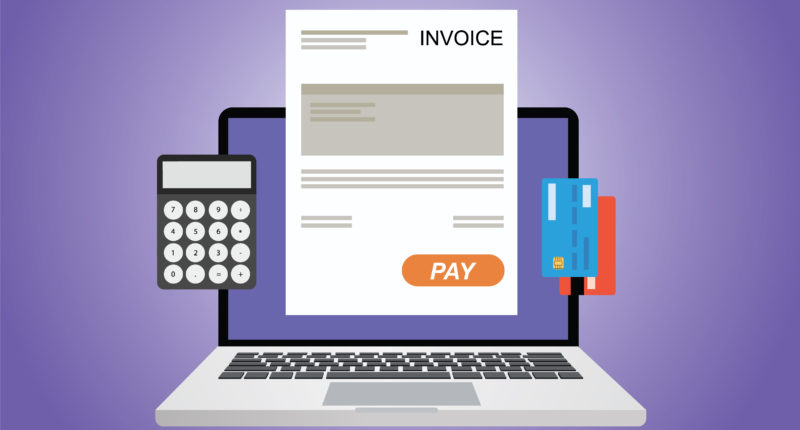In the first phase of e-invoicing, businesses with a turnover of more than Rs.500 crores in the previous financial year have been asked by the government to transition to e-invoicing. These organisations normally have a full-fledged ERP customised to their existing business requirements across all functions. Considering various factors such as the volume of invoices, real-time requirement of invoices, etc., using the offline Excel utility for the generation of e-invoices on Invoice Registration Portal (IRP) is not a feasible solution.
Hence, ERP integration helps businesses to seamlessly generate e-invoice/IRNs (Invoice Reference Numbers) from within their ERP in no time. There are two types of ERP integrations available for e-invoicing. One is an API-based approach, and another is an SFTP-based approach.
API-based (Application Programming Interface) integration is an integrated approach which allows the direct connectivity between your ERP and the GST Suvidha Provider (GSP). The data will be directly picked up from your ERP system, pushed to the e-invoice portal in real-time and further processed. The resulting output will then be updated back into your ERP.
In an SFTP-based integration, data gets pushed from your ERP system in batches into a folder in the SFTP server. From there, the data gets picked by the GSP to be processed further. The results, once generated by the e-invoice system, will be stored back into the SFTP folder, which will be accessible to you.
SFTP integration involves lower costs and time compared with API-based integration. Hence, some taxpayers prefer the SFTP approach. Unlike the API-based approach, e-invoicing through the SFTP approach does not happen in real-time while uploading a document. It happens on a scheduled basis as it is a batch process which runs at a specific interval of time.
Also Read: IRP Clarifies Confusion on QR Code Under e-Invoicing
There are many benefits when you opt for ERP integration compared to an offline utility. The following are some of the benefits of ERP integration:
- Automated data ingestion: Since we have the business’ ERP on one side and the IRP on the other side, there is a need for synchronising data between the two systems. ERP integration allows the automation of data flows from the ERP to the IRP, via the GSP. For this purpose, there are pass-through APIs which do not require users to obtain the IRNs from outside their ERPs. It also supports bulk IRN generation either in real-time or on a scheduled basis. This automation will also help in getting the processed data back from the IRP to the ERP, via the GSP. Data automation leads to business efficiency by eliminating manual efforts and time consumption in uploading data from the ERP. The automation leads to the elimination of manual errors, leading to reduced compliance risk. In simple words, there will be no fear of receiving notices due to manual errors made.
- Automated data validation: The document data fetched by the GSP for IRN generation will be validated either on a real-time basis or later on before it is passed onto the IRP. For this purpose, it accepts documents in any format with the help of JSON API without human intervention. The errors arising from field level validations such as string length, regular expressions, as well as business level validations such as duplication of document number, the applicability of tax, etc. will be sent back as a response. Since e-invoices cannot be amended partially, integration helps reduce any inaccuracies in the e-invoice at the initial stage and prevents cancellations.
- Automated data segregation: An organisation can have a complex legal structure comprising multiple PANs, or multiple GSTINs due to several branches across India. A GSP allows you to manage multiple PANs, GSTINs and branches within the same workspace. With distinct owner IDs at each hierarchical level and the multi-GSTIN upload feature, you can send data out for different PANs or GSTINs using the same integration. Another scenario where data segregation is automated via integration is while sorting and assigning documents. Documents can be sorted into those that require only e-invoices, and into those that require both e-way bills and e-invoices. Thus, with a single request, the user can push the data to GSP, and both the needs will be fulfilled without a second intervention. Another scenario arises where you want to generate e-invoices for B2B invoices, and for B2C invoices, you might only want to generate the payment QR Code. A GSP will have APIs for both these cases, and the documents can be segregated at an integration level.
- Custom access levels: In an ERP, there will be clearly defined user access controls in place. With the integration, the end-users do not need to deviate from the current system, as there is no need to duplicate the same access controls or user provisioning again through the GSP. The access to generate, update or cancel an IRN can be provided using the same access control list controlled by the core IT team of the organisation.
- Business Continuity: Business continuity is enhanced, as in most cases, the business would need to generate an e-invoice instantly, which is not possible when you need to manually generate e-invoices without integration. Also, the business loss risk is minimised, as there is no chance of clerical errors.
Before opting for an ERP integration, businesses need to take a look at the features by both API and SFTP-based integrations.
The features of an API-based integration are:
- Generation of an e-invoice/IRN takes place in real-time.
- Cancellation of e-invoices can be directly done on the ERP.
- ERP configuration requires deep changes as it involves the overall integration of system components.
- The implementation timeline takes three weeks but can vary significantly depending on the ERP and requirements of the business entity.
- Post integration, there will be zero manual effort involved in generating e-invoices.
- The chance of errors will be nil as there is no human intervention involved.
- API-based integration involves relatively higher one-time costs and efforts to be made.
The features of an SFTP-based integration are:
- Generation of an e-invoice/IRN takes place in batches. The frequency of generation can be set-up to be hourly (or more frequent) or daily, as required.
- Some level of ERP configuration will be required, but nothing too deep.
- There is low manual effort involved in the whole e-invoicing process.
- Cancellation of e-invoices cannot be directly done on the ERP under this mode of integration.
- The chance of error will be low as there is little human intervention involved.
- The implementation timeline for SFTP integration is about one week.
All businesses need to do is make a Business Impact Analysis (BIA) from which you can conclude what type of ERP integration you should adopt for your business, and choose an efficient GSP who can fulfil your requirements. ClearTax, a registered GSP, comes up with an e-invoicing solution which is easy to connect and easier to scale. ClearTax is easy to connect as it can connect with any ERP and it is easy to scale as it can scale up to any level of volume of invoices.
For any clarifications/feedback on the topic, please contact the writer at dvsr.anjaneyulu@cleartax.in
DVSR Anjaneyulu known as AJ, is a Chartered Accountant by profession. Loves to listening to music & spending time with family and friends.





